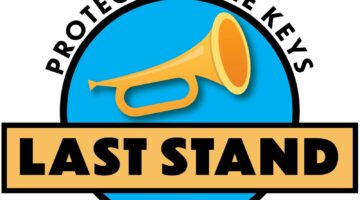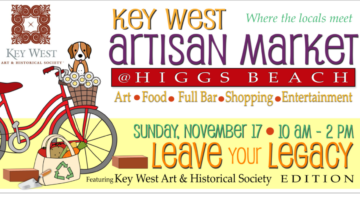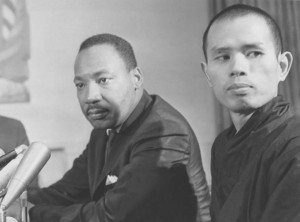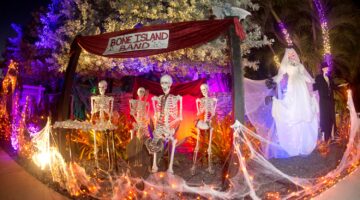Howelings / Hemingway the Hoarder
By Mark Howell
The Key West Art & Historical Society’s latest exhibit at the Custom House Museum — “Following the Fish: Hemingway in Key West” — reveals Hemingway to have been a preservationist with a sharp awareness for the conservation of our marine environment in the Keys.
Meanwhile, the group of Key West citizens who traveled to Havana last month to witness the Cuban premier of Bill Lorraine’s “Hemingway Suite” at the Teatro Marti in Havana also got to visit Cuba’s own “Hemingway House,” the Finca La Vigia.
The group included David Gonzales, curator of Key West’s Hemingway House museum, who particularly enjoyed the opportunity to go inside the finca, a treat forbidden to regular tourists who are allowed only to peer through the windows. The Key Westers saw Mary’s Room, the master bedroom named after Ernest’s wife, and could also browse the library with its books from floor to ceiling. They also got a close-up look outside at Hemingway’s famous and restored fishing boat with “Pilar Key West” painted on its escutcheon.
Here at Howelings can now reveal, as evidenced by materials at the house that have just been shared for the very first time with scholars from the United States, that our Hem was a hoarder.
It appears that he Nobel-winning author, who lived in Cuba between 1939 and 1960 and wrote “The Old Man and the Sea” and “A Moveable Feast” there, could not bear to toss such items as shopping lists, orders for turtle soup and French snails from a delicatessen on Manhattan’s Upper East Side, his son’s homework, a brochure from a swimming-pool filter company and Mary’s hamburger recipes.
This domestic effluvia comes from the second consignment of 2,500 documents that has been received from the finca by the Hemingway archive in at the John F. Kennedy Presidential Library and Museum in Boston.
Ten years ago it was agreed between the museum and the Cuban government that documents left in the basement of the finca when Ernest and Mary left Cuba in 1960 would be sent to the United States to be scanned and preserved at the museum in Boston.
The trove included treasures such as an alternative ending to the novel “For Whom the Bell Tolls.” But this latest consignment contains such incidentals as correspondence on how to ship Hemingway’s Buick Roadmaster from Europe to Havana and thence to the United States. The hoard also includes shopping lists, used racecourse and bullfighting tickets, insurance policies and passports way out of date.
When the Hemingways left their Cuban home half a century ago, they were planning to return. Instead, Ernest went to Spain, to New York City and finally to Idaho, where he struggled with writer’s block and alcoholism and ultimately killed himself with a shotgun in 1961.
Mary then returned to Havana and made a deal with Fidel Castro that she could take the actual manuscripts of the novels and some other papers out of the country to donate to the Kennedy library. Forty-four years later the two nations agreed on an exchange of the remaining papers for scanning in Boston.
“We can only be grateful,” said Susan Wrynn, curator of the archive, about the writer’s hoarding, “but if you had to live with it, it would drive you crazy.”
*****
Recently we reported in this column on the brain hemorrhage experienced in November by Thich Nhat Hanh, the revered, 88-year-old Vietnamese Zen Monk whom Martin Luther King once nominated for the Nobel Peace Prize and who has visited Key West at the behest of his many supporters here.
The latest news that he is gradually emerging into full wakefulness with his eyes open for much of the day suggests he is no longer in a coma. He is able to recognize familiar faces and is responsive to verbal stimuli. He has begun smiling in recent. But he is not yet able to speak.
*****
Quote for the Week:
“What a wonderful day. What has made it so perfect? It has been a natural balance of the physical, intellectual and social with an easy, unforced rhythm. Work not deformed by pressure. Relationship not strangled by claims. Intimacy tempered by a lightness of touch. We have moved through our day like dancers, not needing to touch more than lightly because we are instinctively moving to the same rhythm.”
— Anne Morrow Lindbergh.
[livemarket market_name="KONK Life LiveMarket" limit=3 category=“” show_signup=0 show_more=0]






What a great story of Hemingway and his “stuff”…A very human trait, collecting junk. So happy lines of communication are finally opening up between our nations.
Thank you for the up-date on Thich Nhat Hanh. Good news, indeed. AND thank you for that lovely image of MLK and the young monk. Heroes.